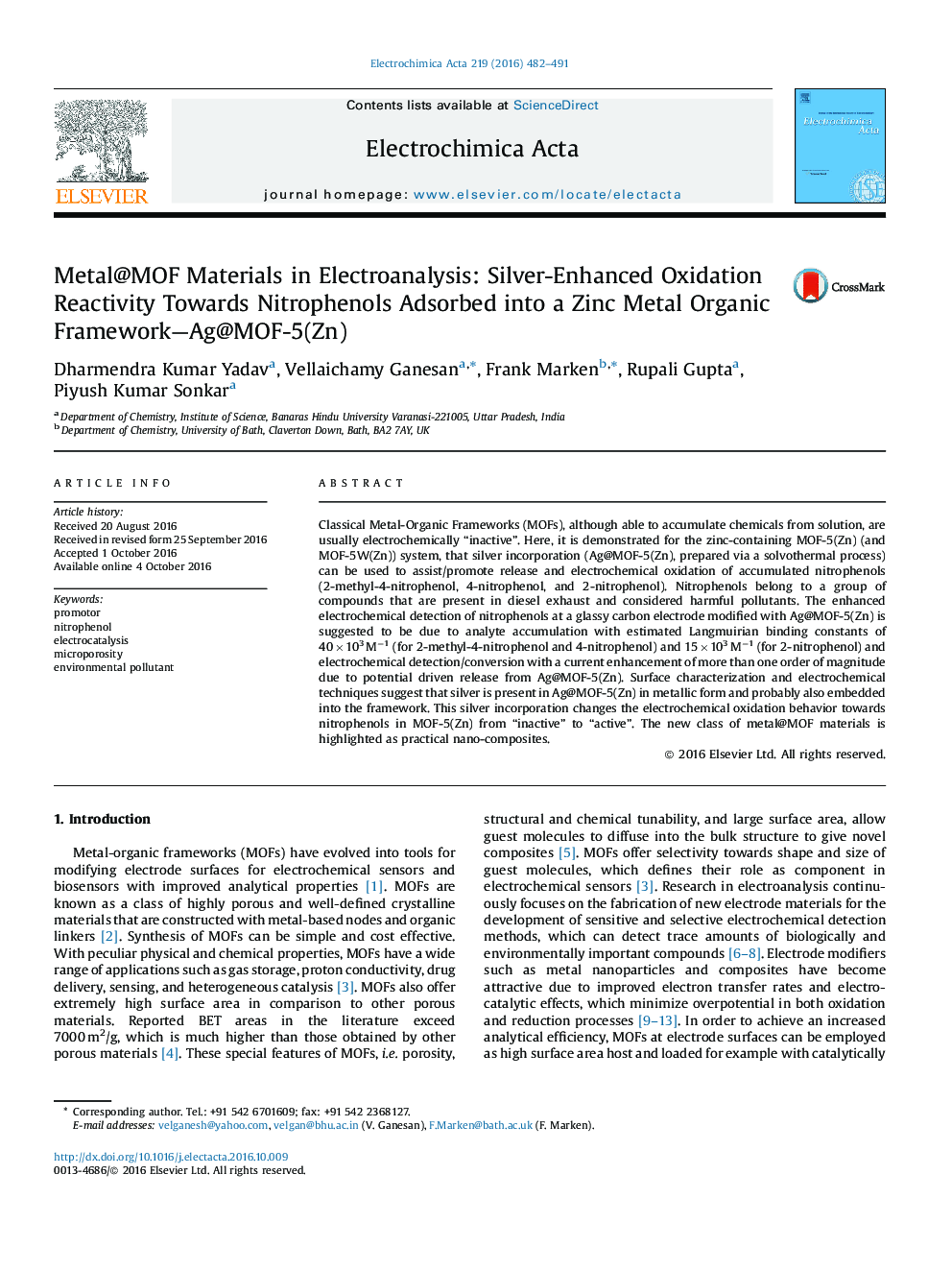| Article ID | Journal | Published Year | Pages | File Type |
|---|---|---|---|---|
| 6472972 | Electrochimica Acta | 2016 | 10 Pages |
â¢Ag@MOF-5(Zn) nanocomposite synthesisied in a hydrothermal process and investigated by electrochemical methods.â¢Mechanism of nitrophenol adsorption and electrochemically driven release discovered.â¢Application in electroanalytical detection of nitrophenol derivatives suggested.
Classical Metal-Organic Frameworks (MOFs), although able to accumulate chemicals from solution, are usually electrochemically “inactive”. Here, it is demonstrated for the zinc-containing MOF-5(Zn) (and MOF-5W(Zn)) system, that silver incorporation (Ag@MOF-5(Zn), prepared via a solvothermal process) can be used to assist/promote release and electrochemical oxidation of accumulated nitrophenols (2-methyl-4-nitrophenol, 4-nitrophenol, and 2-nitrophenol). Nitrophenols belong to a group of compounds that are present in diesel exhaust and considered harmful pollutants. The enhanced electrochemical detection of nitrophenols at a glassy carbon electrode modified with Ag@MOF-5(Zn) is suggested to be due to analyte accumulation with estimated Langmuirian binding constants of 40Â ÃÂ 103Â Mâ1 (for 2-methyl-4-nitrophenol and 4-nitrophenol) and 15Â ÃÂ 103Â Mâ1 (for 2-nitrophenol) and electrochemical detection/conversion with a current enhancement of more than one order of magnitude due to potential driven release from Ag@MOF-5(Zn). Surface characterization and electrochemical techniques suggest that silver is present in Ag@MOF-5(Zn) in metallic form and probably also embedded into the framework. This silver incorporation changes the electrochemical oxidation behavior towards nitrophenols in MOF-5(Zn) from “inactive” to “active”. The new class of metal@MOF materials is highlighted as practical nano-composites.
Graphical abstractDownload high-res image (137KB)Download full-size image
